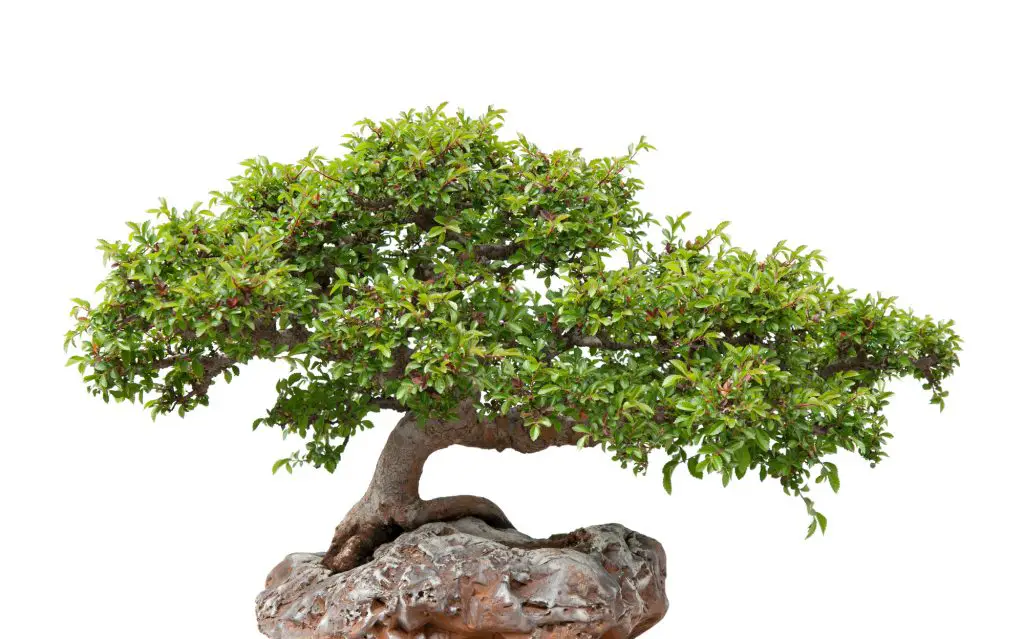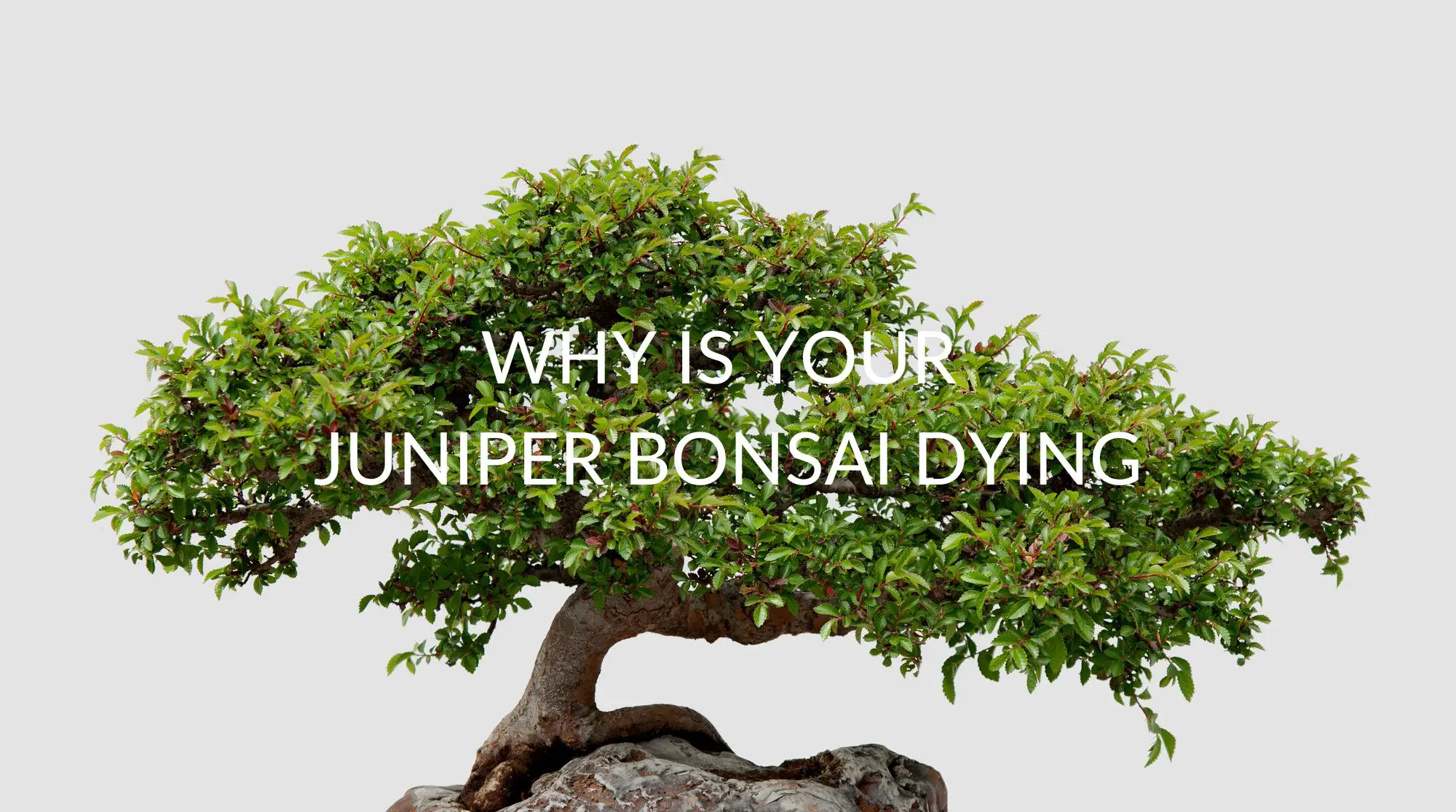Bonsai cultivation is a popular hobby, and a juniper bonsai tree is a great choice for beginner hobbyists. Bonsai is an ancient Japanese art form that involves raising miniature ornamental trees, training, and shaping them to resemble full-sized trees. The practice is thought to relieve stress and improve well-being.
If your juniper bonsai tree is starting to wilt, or the leaves or needles are turning yellow or even dropping off, then it might be dying. You need to determine the reason and correct the issue as quickly as possible. Keep reading to learn why your juniper bonsai tree is dying and how you can nurse a sick tree back to health.
Why Is My Juniper Bonsai Dying?
The Juniper Bonsai tree includes many different species and either has scale-like foliage or needle-like foliage. It’s important to learn which species your juniper is to learn how to best care for it. They require the right combination of soil, sun, and water for the plant to stay healthy. Here are some reasons your juniper bonsai might be dying.
Overwatering
Bonsai trees are accustomed to a dry, arid environment and do not need as much water as a typical houseplant. Overwatering can kill a bonsai tree, especially if standing water pools near the root system. Mushy roots and yellowing leaves are a sign of overwatering.
Underwatering
Bonsai trees are small in size and can’t store much excess water. Underwatering can lead to the leaves and needles wilting or drying out. The trunk may begin to wrinkle or crease. If the soil feels dry and hard, or the roots are traveling out of the soil, your bonsai needs more water.
Improper Sunlight Exposure
Juniper Bonsai come in many different species, but in general, they need a lot of sunlight to thrive. That’s why they do best outdoors. Your bonsai tree must get 6-8 hours of indirect sunlight every day. A bonsai that doesn’t get enough sunlight won’t be able to make the amount of chlorophyll it needs to feed itself and will grow weak.
Improper Soil
Many bonsai trees purchased from a retailer or garden store will have clay soil, which tends to absorb the water too quickly and leave your plant thirsty. Other soil types will retain too much water. In general, juniper bonsai trees need soil specially designed for this type of plant. The best soil will offer proper drainage to prevent root rot or over-saturation.
Lack of Fertilization
Juniper Bonsai require the right amount and type of fertilization to thrive. Even though they are very easy to care for and maintain, using the wrong kind of fertilizer or neglecting fertilizer altogether can lead to a weak, slow-growing bonsai that is more susceptible to disease.
Pests or Disease
Many kinds of fungal and bacterial infections can harm your juniper bonsai. Some may be recognizable on the leaves and trunk of the tree, and some may not be noticeable until the problem has progressed past intervention. Several common pests will suck the life out of your bonsai tree.
Improper Pruning
Bonsai trees withstand pruning and shaping well, but improper pruning, over-pruning, or pruning during the wrong season can be detrimental to the growth of your tree. Remember that a juniper bonsai can live to be over 100 years old, so patience with pruning and shaping is important to the overall health and well-being of your tree.

How Do You Know When a Juniper Bonsai Is Dying?
Wilting or Drooping Leaves
Unhealthy leaves can be a sign of poor sun exposure or an improper watering schedule. Leaves that are turning yellow or brown are also a bad sign. Needle-like varieties may develop dry, brittle, and browning needles that may even begin to fall off.
Fuzzy Spots on Trunks and Leaves
Fuzzy spots on the trunks or leaves are a sign of a fungal infection, often called spotted wooly fuzz. If your juniper bonsai has fuzzy spots on the leaves or trunk, you need to treat it right away. Applying rubbing alcohol to the spots may help to kill the fungus and save your tree from further damage.
Slow Growth
Slow growth in a bonsai is a sign that your tree is not getting enough water or sunlight. Even though it may start as a small problem, the lack of either of these two things will be devastating to the health of your tree over time.
Loss of Leaves Out of Season
If your bonsai is dropping leaves during the growing season (spring and summer), this can point to a problem with the care it is receiving. Lack of appropriate water, sunlight, and soil can damage the vitality of your juniper bonsai and lead to leaves being shed when the plant should be growing.
Shriveled or Creased Trunk
A shriveled trunk or branches or a trunk that is developing creases is a sign that your bonsai isn’t getting enough water. The tree will start to use the water stored in its trunk and leaves to survive, leading to shriveling and weakness.
Mushy Discolored Roots
Mushy or black root systems can be a sign of overwatering and may mean your tree has developed root rot from sitting in standing water. It can also be an indication that there is a fungal disease affecting the roots. Either problem is sure to kill your plant sooner rather than later.
Can I Save a Dead Juniper Bonsai?
You might not notice anything is seriously wrong with your juniper bonsai until it’s too late. Many problems won’t manifest outwardly right away. Sometimes people purchase a juniper bonsai and bring it home, only to have it die shortly later. This is because it was not properly taken care of in the store and is already suffering.
You can check the health of your bonsai tree by performing the scratch test. Carefully scratch a small spot on the trunk of the tree. The inner layer should appear a vibrant green color, meaning the bonsai is still viable and will likely rebound. If the center portion of the trunk is dry and there is no green inside, it is likely too late to save the tree.
Wondering why your Juniper Bonsai’s needles are drying out?
Another way to test the vitality of your juniper bonsai is with the snap-scratch test. Carefully bend and snap a twig off one branch of the bonsai. If the bonsai is dead or dying, the twig will break easily and cleanly with very little resistance. If the tree is still alive inside, the twig will bend instead of breaking and appear moist, not dry.
How Do You Save a Dying Juniper Bonsai Tree?
Here are some tips on steps you can take to save a dying juniper bonsai tree.
Trim Leaves and Roots
Prune dead or discolored sections of the leaves using sharp, sterilized shears. Always make clean cuts, and trim back to the trunk. Trim away any rotted, mushy, or discolored parts of the root system using clean, sterilized shears. Always desterilize your shears in between trimming leaves and roots. Be careful to avoid over-trimming roots, so you don’t shock the plant.
Here’s how you can save a bonsai tree with trunk rot:
Repotting
Choose a pot just a bit bigger than the bonsai plant, and make sure it has drainage holes in the bottom. Use a new pot and fresh soil when repotting to avoid cross-contamination. Wash the roots by sitting them in tepid water and allowing them to soak for a few minutes to clean any of the remaining soil away before repotting.
Choose The Right Soil
The right soil for your bonsai is important. You can buy a specialized formula from a local garden store. Or make your own using potting soil, perlite, and sphagnum moss. You can also use things like a mixture of sand or ground volcanic rock and humus. The important thing is for the soil to be well-draining to prevent the water from pooling in the bottom of the pot.
Choose The Right Fertilizer
A slow-release fertilizer low in nitrogen is the best choice for a juniper bonsai. Don’t add fertilizer for at least a month after repotting. A regular feeding every few weeks during the spring and summer months is recommended to promote growth, but don’t fertilize during the dormant months of fall and winter.
Choose The Right Location
Juniper bonsai do best outdoors because they require a good amount of sunshine every day. They should get 3—4 hours of indirect sunlight in the morning and the same in the evening. Try to move your bonsai into the shade during the hottest hours of the midday, and bring it indoors if the temperature drops too low.
Water Correctly
Juniper bonsai trees should get water only when they need it, not on a schedule. The amount of water they require will be dependent on the climate and the species of juniper tree. The rule of thumb is to wait until the top inch or two of the soil is dry to the touch, then water deeply. Make sure you give the soil enough time to dry out between waterings.
Be Patient
Understandably, people who purchase a juniper bonsai want to prune it, but it’s important to give the tree time to grow and recover. Although it is ok to prune your bonsai during the active growth seasons of spring and summer, avoid pruning during the dormant period. A recovering tree may take a whole season to show any signs of improvement.
If you’re planning on shaping or training your bonsai do it slowly and only shape the tree during the dormant phase. There are several different ways to train your bonsai tree. Read up and learn all you can about how to train your bonsai the right way to avoid damaging the tree.
In Conclusion
People love bonsai trees for their beauty and their therapeutic value. The care, patience, and dedication it takes to raise and sculpt these trees can bring great joy and peace to people’s lives. The juniper bonsai is a great choice for anyone wanting to try their hand at the hobby. They are hardy and, in general, easy to care for, making them suitable for new gardeners.
The important thing to remember when growing a juniper bonsai is to make sure the tree gets what it needs. If you provide the correct soil and the right amount of water and sunlight, then your tree will flourish. Take immediate action to correct the environment or care schedule of a suffering bonsai tree, and it should make a full recovery.
Chances are, your bonsai tree will live longer than you will!


Understandably, people who purchase a juniper bonsai want to prune it, but it’s important to give the tree time to grow and recover. Although it is ok to prune your bonsai during the active growth seasons of spring and summer, avoid pruning during the dormant period.